 Tech giant Microsoft started the New Year by announcing it was releasing a feature phone which will be priced at $29.
Tech giant Microsoft started the New Year by announcing it was releasing a feature phone which will be priced at $29.
 Tech giant Microsoft started the New Year by announcing it was releasing a feature phone which will be priced at $29.
Tech giant Microsoft started the New Year by announcing it was releasing a feature phone which will be priced at $29.
 Xiaomi Technology, which is beginning to challenge smartphone players including Samsung and Apple, turned over close to $12 billion in 2014, according to its CEO.
Xiaomi Technology, which is beginning to challenge smartphone players including Samsung and Apple, turned over close to $12 billion in 2014, according to its CEO.
 ABI Research believes that by the end of this year processors including embedded security technology will reach the billion mark.
ABI Research believes that by the end of this year processors including embedded security technology will reach the billion mark.
Vendors are building in the Trusted Execution Environment (TEE) will reach 366 million as part of that figure.
The shipments are driven by governments, financial service companies and other enterprises largely to ensure secure ID and payments.
The market for TEE devices is still in its early stages, said ABI. But shipments are bound to increase for them and for Host Card Emulation (HCE).
ARM is integrating TruZeone architecture into every Cortex-A family processor it licenses to vendors.
Unlike TEE devices, HCE depends on the cloud and lets banks introduce mobile NFC products without relying on smartphone SIMs. ABI said that HCE support in smartphones is growing exponentially, and will account for shipments of 252 million by the end of the year.
Players in the game include ARM, Nok Nok Labs, NXP Semi, Infineon, Trustonic and Obertur Technologies.
 Companies using technology to track and attract shoppers mean the number of retail deployments by the end of this year has risen 100 percent compared to 2013.
Companies using technology to track and attract shoppers mean the number of retail deployments by the end of this year has risen 100 percent compared to 2013.
This year, most deployments were in clothing, grocery and shopping malls using information like customer analytics, offers, product search and navigation.
But next year burger joints and coffee shops are expected to take up smartphone applications.
ABI Research senior analyst Patrick Connolly said: “We are seeing growth across all major technologies, including BLE, Wi-Fi and audio, with 2015 being an important year for handset based location, sensor fusion, magnetic fields and LED.”
Most deployments so far have been in the USA but that’s set to change next year and in coming years, without any single company having a dominant market share, he said.
“In 2015, we also expect to see camera analytics companies like ShopperTrak, Irisys and Brickstream playing an increasing role as they expand their offerings into BLE, Wi-Fi and in-store analytics,” he said.
 Emerging markets worldwide have accounted for the growth of smartphones in the third quarter of this year, growing by 20 percent.
Emerging markets worldwide have accounted for the growth of smartphones in the third quarter of this year, growing by 20 percent.
Gartner said Samsung lost market share, but Chinese manufacturers are showing positive growth.
Altogether, sales of smartphones accounted for 301 million units shipping in the third quarter.
Roberta Cozza, research director at Gartner, said in the third quarter smartphones represented 66 percent of the total mobile phone market. She thinks that by 2018 nine out of 10 phones will be smartphones.
Western Europe saw a decline in growth of 5.2 percent, but the USA saw high growth of 18.9 percent, fuelled by the launch of the iPhone 6 and 6 Plus.
In terms of market share, Samsung holds 24.4 percent of the market, Apple holds 12.7, Huawei holds 5.3 percent, Xiaomi has 5.2 percent of the market and Lenovo five percent.
As far as operating systems are concerned, Android ruled the roost in the third quarter (83.1%), Apple was next with 12.7 percent, Windows only held three percent and Blackberry 0.8 percent.
Cozza said: “The smartphone market is more than ever in flux as more players step up their game in this space. With the ability to undercut cost and offer top specs, Chinese brands are well positioned to expand in the premium phone market too.”
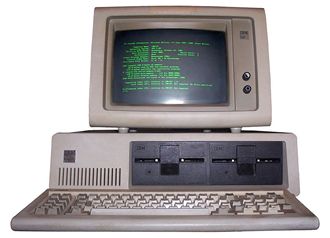 People are being tempted to upgrade their PCs after years of delayed renewals.
People are being tempted to upgrade their PCs after years of delayed renewals.
IDC said that PC shipments in Western Europe were up by 23.6 percent in the third quarter, compared with the same quarter last year.
Although sales slowed in the enterprise arena, people are being tempted by low end notebooks using Windows 8.1 Bing. The commercial sector has already largely completed its shift from Windows XP, IDC said.
The tablet market declined in the third quarter but 2-in-1 machines did well, growing 46.4 percent in the quarter. Smartphones showed 6.1 percent growth – largely caused by affordable smartphones and the arrival of 4G networks.
IDC calls notebooks, desktop PCs, smartphones and tablets “smart connected devices” and the leader of the pack is Samsung – even though its growth fell by 16.5 percent compared to the third quarter of 2013. Samsung was followed by Apple, Sony, HP, and Lenovo.
Lenovo showed a 64.1 percent unit growth quarter on quarter, year on year.
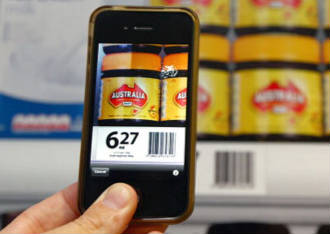 A report predicted that by 2018 over 50 percent of people will use either a smartphone or a tablet for all online activities.
A report predicted that by 2018 over 50 percent of people will use either a smartphone or a tablet for all online activities.
Gartner said people will gradually move away from the PC as people use smartphnes and tablets more more.
Voice, gesture and other ways of communicating with devices online will be the rule of thumb, while 40 percent of enterprises will use wi-fi as the default connection and Ethernet will go away.
Security built into wi-fi appears to be adequate to the task, said Gartner, after the introduction of Advanced Encryption Standard (AES) into the equation.
And there’s more good news. Gartner thinks by 2020 we’ll all be paying less than $100 for smartphone and other devices. Subsidies or sponsorships will also reduce the cost of devices while by 2018 over half of business to enterprise (B2E) mobile apps will be used by business analysts using codeless tools.
 The head of Samsung’s beleaguered mobile division has hung on to his job – as we reported earlier this week.
The head of Samsung’s beleaguered mobile division has hung on to his job – as we reported earlier this week.
But there will be blood on the carpet, according to sources who told Reuters that JK Shin’s three chief underlings will get their marching orders soon.
Samsung is the biggest smartphone manufacturing company in the world and leverages its vertical business, which includes memory modules, LCD screens and other components.
DJ Lee, who heads up Samsung’s mobile marketing worldwide, is one of those to feel the pain, according to the report.
Samsung is facing increased competition from Chinese manufacturers and continues to be under pressure at the high end from Apple with its iPhone products.
Reuters reports that the local press will cull around 25 percent of its executive in the mobile segment.
Financial analysts believe that Samsung will record poor revenues for 2014.
 While the concepts of “Black Friday” and “Cyber Monday” are largely unknown in these isles, shops have jumped on the American bandwagon causing riots and mayhem in shops across the UK.
While the concepts of “Black Friday” and “Cyber Monday” are largely unknown in these isles, shops have jumped on the American bandwagon causing riots and mayhem in shops across the UK.
And now James Lovell, European retail guru, has got his analytics engines to work and notices that although sales fell compared to last year, the percentage of sales made on mobiles rose by around a third.
He said mobile phone usage as a percentage of overall sales rose by 42.88 percent, and tablets used to buy stuff rose by 12 percent.
The average order value on “Black Friday” was £88.86 percent, and mobile traffic represented 59.8 percent of all online traffic in the UK.
Contrasting different mobile operating systems, Lovell said Android OS sessions as a percentage of overall “Cyber Monday” sales grew by 55 percent, but only represented 11 percent of the overall sales spend.
But the desktop is not dead – over half of all online sales were made by people tip tapping into whatever flavour of Windows they’re being forced to use.
 Shipments of smartphones worldwide slumped by 25.9 percent in 2014 and will fall again next year by 12.4 percent.
Shipments of smartphones worldwide slumped by 25.9 percent in 2014 and will fall again next year by 12.4 percent.
That’s the opinion of market intelligence company Trendforce which said 1.17 billion smartphones left the factories this year and 1.31 billion will ship next year.
The reason, according to Avril Wu, an analyst at Trendforce, is because the penetration rate “is already very high while the market is saturated”.
She said that Chinese brands will represent 17 percent of handset shipments in 2015 – with competition intense. Lenovo, Huawei, Xiaomi, Coolpad, ZTE and TCL are competing on price meaning their margins are as thin as a cigarette paper. Trendforce thinks mergers and acquisitions over the next few years will be the inevitable conclusion of this trend.
Meanwhle, the iPhone 6 continues to sell well but brands using the Android and Windows operating systems find themselves competing on price. This will continue in the coming year.
The 4G network, she says, is now in place and will mature next year, with Qualcomm taking the lead over Mediatek in the semiconductor infrastructure required.
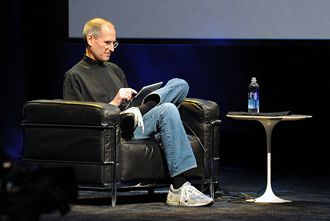 Out of the 74.53 million tablets expected to ship during the current calendar quarter, the Apple iPad will take the lead with 26.8 percent of the worldwide shipments.
Out of the 74.53 million tablets expected to ship during the current calendar quarter, the Apple iPad will take the lead with 26.8 percent of the worldwide shipments.
That’s according to Digitimes Research, which said that out of those 74.5 million tablets, 20 million will be iPads, 27.8 million will be from other multinational vendors such as Samsung and Lenovo, and 26.7 million will be so-called “white box” or unbranded units.
Taiwan is the ghost in the tablet machine and accounts for two thirds of the global market for tablets with firms like Foxconn, Pegatron, Compal and Quanta churning them out.
While figures for tablets shipping in the fourth quarter seem healthy, and rose by sequential quarter by 17.6 percent, if you compare the figures year on year, there’s a decline of shipments by 10.1 percent.
The pundits have many theories as to why the tablet market is showing signs of stalling, but the favourite is that in Western markets most people already have one or more tablet and see little or no reason to either buy more tablets or to upgrade.
And increased sales of smartphones with larger screens – so called phablets – are nibbling away at the tablet market.
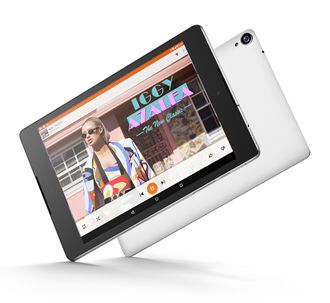 A report by financial analysts at Seeking Alpha suggests that Google has come adrift with its smartphone hardware strategy.
A report by financial analysts at Seeking Alpha suggests that Google has come adrift with its smartphone hardware strategy.
Seeking Alpha claims the Nexus programme does not now include the kind of devices most people would rush out to buy.
And even devices like the joint Google-HTC One GPe – which the analysts describe as the “Rolls Royce” of five inch Android smartphones is in a spot of bother. Because it’s sold out.
The Nexus 5 is last year’s model with an ancient Qualcomm 800 CPU and less memory.
The Nexus 6 is sold out but anyway it’s too big because few want a six inch screen. The Motorola G isn’t sold out but it’s last generation.
Seeking Alpha Analyst Anton Wahlman says that everything Google is selling on its site is sold out, suggesting the behemoth is losing its way on the hardware front. You can read more of what he has to say about the debacle, here.
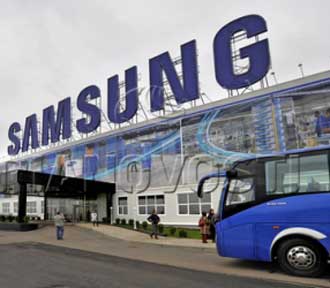 In a bid to cut prices and keep pace with its competitors it appears Korean giant Samsung is putting pressure on its suppliers to cut their prices.
In a bid to cut prices and keep pace with its competitors it appears Korean giant Samsung is putting pressure on its suppliers to cut their prices.
Digitimes reports that Samsung wants some component suppliers for its display business to slash their prices, in some cases by as much as 30 percent during this quarter.
The display business not only services the creation of monitors and TVs made by Samsung, but also, and in this case more crucially, displays on smartphones.
Samsung has seen its market share on tablets and smartphones show something of a decline in 2014 and wants to reverse that trend.
The same report said that Samsung is also slashing prices on its OLED displays in a bid to attract more customers to the technology. Expensive to develop, OLED needs volumes to sell in order to achieve payback for the R&D.
Lenovo and Dell are both likely customers for OLED displays – a significant design win for Samsung if the report proves to be true.
 Compal, which claims to be the second largest contract maker of notebooks worldwide, said it anticipated slower sales of the devices this quarter.
Compal, which claims to be the second largest contract maker of notebooks worldwide, said it anticipated slower sales of the devices this quarter.
The fourth quarter was traditionally the most bouyant time of the year to sell PCs.
But company president Ray Chen said that falling sales of notebooks will be offset by shipments of smartphones and tablets.
Chen said, according to the Taipei Times, that non PC business will contribute 30 percent of shipments this quarter. Last quarter that figure was 21 percent.
Compal makes tablets for Apple and Amazon, and Chen said smart devices will be the major driving force for revenues next year. Notebook shipments will flatline.
Margins are already slim for companies like Compal and Wistron who make devices that are often re-branded by multinationals like HP. Compal’s gross margin in this quarter is only 3.26 percent.
 If an enterprise is thinking of deploying BYOD (bring your own device) programmes tablets are better than notebooks or smartphones.
If an enterprise is thinking of deploying BYOD (bring your own device) programmes tablets are better than notebooks or smartphones.
That’s according to Gartner, which said that if an enterprise spends half a million dollars to deploy 1,000 enterprise owned tablets, it’s making a mistake. Because the same enterprise could support 2,745 user owned tablets at the same price.
Federica Troni, a research director at Gartner, said direct costs of user owned tablets are 64 percent lower and offering a BYOD option is the best way to keep costs down while broadening access.
She said that users’ own smartphones have a total cost of ownership similar to enterprise owned smartphones. They will only deliver savings when organisations don’t reimburse or subsidise voice and data plans.
There are problems, however, in the tablet BYOD idea. Users will have to at some extent doing their own support and they will also have to be to some degree IT savvy, she said.